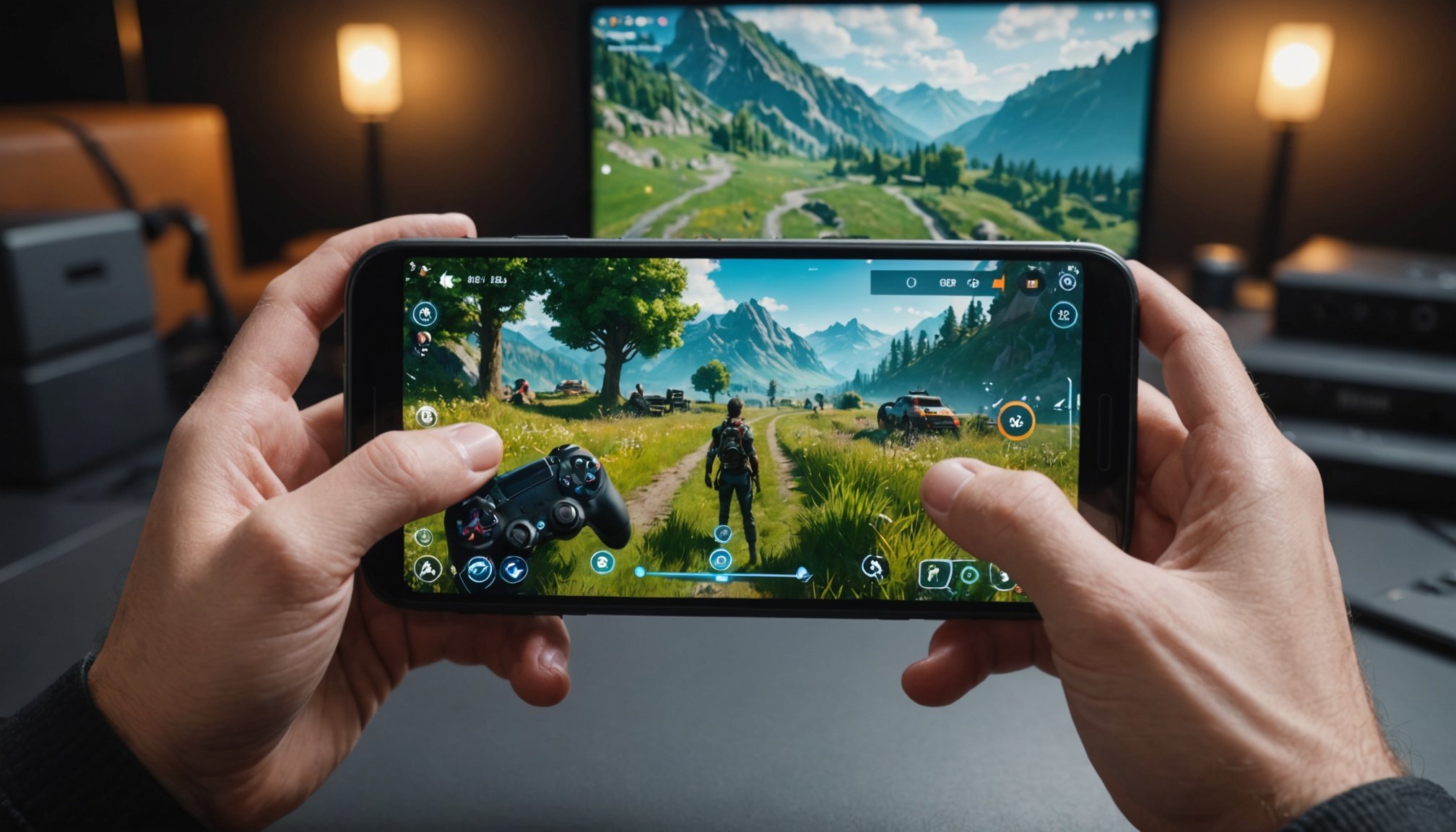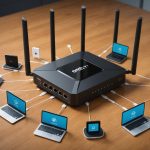Importance of Optimizing Smartphone Settings for Gaming
Optimizing smartphone settings is crucial for gaming optimization. Gaming performance is directly influenced by how well these settings are adjusted. When not optimized, your device might underperform, resulting in lag, lower frame rates, and diminished visual quality. Adjusting settings can significantly enhance the gaming experience by ensuring smoother gameplay and better responsiveness.
Smartphones come with various features that, when tailored correctly, can maximize performance. Adjusting display brightness, disabling background apps, and managing power settings are simple tweaks that enhance efficiency. Furthermore, tweaking graphics settings within games can significantly improve performance without sacrificing too much visual quality.
Topic to read : Unlocking the power of voice: your ultimate guide to smart home lighting control
A pivotal benefit of this optimization is a more immersive gaming experience. When settings are fine-tuned, games run more smoothly, and players enjoy sharper graphics and faster load times. However, it is also essential to balance performance with device longevity. Overclocking or pushing hardware beyond its limits can lead to overheating and battery strain, potentially shortening the lifespan of your device.
To sum up, by making thoughtful adjustments to your smartphone settings, you can enjoy improved performance and a more engaging gaming experience without compromising the device’s health.
Also read : Boost your energy savings: the ultimate smartphone guide to smart plug management and monitoring
Graphics Optimization Techniques
When playing games, achieving the perfect balance between graphics settings and smooth gameplay is crucial. Adjusting resolution and quality settings can greatly impact both visual quality and frame rate, enhancing your overall gaming experience.
Resolution adjustments allow you to tailor the game visuals to your hardware capabilities. Lowering the resolution can boost the frame rate, but it might reduce visual clarity. Similarly, tweaking quality settings, such as texture, shadow, and effects quality, can provide a great visual compromise without significantly impacting performance.
For higher frame rates, disabling intensive graphical options like motion blur and depth of field might be wise. These features can strain your computer, reducing performance. V-Sync is another setting to consider. While it eliminates screen tearing, it may cap your frame rate, so adapting it depending on your needs is essential.
A visual comparison between optimized and default settings reveals striking differences. Optimized settings can offer a sharper and smoother experience without sacrificing frame rate. This balance ensures an immersive and fluid gameplay session, proving that with the right adjustments, you can enhance both visual quality and gaming performance.
Battery Management for Gamers
Efficient management of a smartphone’s battery life is paramount for gamers seeking uninterrupted gameplay. Understanding various battery saving modes available on devices can significantly impact gaming performance. While some modes might reduce power consumption, they often optimise aspects like screen brightness, CPU performance, and connectivity to extend battery life. Balancing these settings ensures that gaming performance remains uncompromised while conserving power.
App management plays a crucial role in battery conservation during gaming sessions. Background apps often consume resources even when not actively in use. Gamers can improve battery life by proactively closing unnecessary applications or adjusting their settings to limit background activity. This approach aids in ensuring the battery’s energy is focused on delivering an optimal gaming experience.
For those involved in prolonged gaming, adopting specific battery saving strategies can be beneficial. Here are some tips:
- Lower screen brightness to a comfortable level.
- Use headphones instead of speakers to reduce power draw.
- Enable the device’s low power mode during non-essential periods to prolong usage time.
By implementing these techniques, gamers can extend their battery life while maintaining the desired gaming performance. Proper battery management allows for an enhanced and uninterrupted gaming session.
Network Settings and Game Performance
A stable internet connection is a cornerstone for enjoyable online gaming. Slow or unstable connections can lead to high latency, often referred to as lag, disrupting gameplay and causing frustration. To optimize your gaming experience, focus on network settings and Wi-Fi configurations.
Recommended Network Settings for Optimal Gameplay
- Wired Connection: Whenever possible, use an Ethernet cable. This reduces latency by providing a more stable connection compared to Wi-Fi.
- Wi-Fi Settings: If a wired setup is not feasible, ensure that your router is in proximity to your gaming device, away from physical obstructions. This helps in maintaining a strong signal.
- Bandwidth Management: Limit other devices from consuming bandwidth during gaming sessions. This can be managed via the Quality of Service (QoS) settings on your router, prioritizing your gaming device.
Troubleshooting Common Connectivity Issues
- Router Restart: Regularly rebooting your router can resolve temporary connectivity issues.
- Firmware Updates: Keeping your router’s firmware updated ensures you benefit from performance improvements and security enhancements.
- Network Optimization Apps: Consider apps or software that can help fine-tune your network for reduced latency and stable gaming performance.
Implementing these strategies can significantly improve your online gaming experience, enabling smoother and more responsive gameplay.
Recommended Apps for Gaming Optimization
In the world of gaming, having the right tools can significantly enhance your device’s performance. There are several essential performance apps that assist in optimizing your device settings. These apps tweak graphics settings, freeing up system resources to improve frame rates and minimize lag. Some popular choices include MSI Afterburner and NVIDIA GeForce Experience, both known for enhancing system performance.
Gaming tools also include monitoring capabilities, allowing users to track key performance metrics. For instance, MSI Afterburner not only optimizes graphics but also lets you view GPU utilization, temperature, and fan speeds. Similarly, Razer Cortex provides instantaneous system analysis, showing real-time CPU and RAM usage to ensure your device is operating at peak efficiency.
When comparing different enhancement apps, features and user-friendliness are crucial points to consider. For example, NVIDIA GeForce Experience offers instant access to optimal settings calibrated by game developers, alongside easy-to-use interfaces. Meanwhile, AMD Radeon Software stands out for its customizable user experience, allowing gamers to tailor performance settings manually to their preferences.
By employing these system optimization tools, users can ensure their devices run smoothly, enhancing both the visual experience and the responsiveness of games.
Step-by-Step Guides for Common Devices
Navigating the numerous device-specific settings can be perplexing, particularly when aiming to optimize a smartphone for peak performance. Let’s delve into some optimization steps tailored to popular smartphone brands.
For Android users, the journey usually begins with Settings. Here, energy-intensive applications can be monitored, and battery usage statistics are readily visible. It is recommended to enter Battery Optimization to minimize background processes, significantly extending battery life. Contrary to Android’s flexibility, iOS devices offer a more streamlined but limited customization process. By accessing Battery Health in iPhone settings, users can engage the Optimised Battery Charging feature to prolong battery lifespan.
To aid in these processes, visual aids such as diagrams or step-by-step screenshots often prove invaluable. For those who benefit from auditory and visual learning, video tutorials offer an alternative. These resources can provide a comprehensive walkthrough, empowering users to maximize their devices’ potential.
Remember, the differences between Android and iOS, like varied system interfaces and setting terminologies, can influence the effectiveness of these steps. Adjusting methods based on your smartphone choice is crucial for achieving the desired results.
Troubleshooting Common Issues
Experiencing game performance issues can be frustrating but is often solvable with the right approach. The most common problems gamers face include in-game lag, slow loading times, and unexpected crashes. To address these issues effectively, understanding the root cause is essential.
For lag solutions, ensure your device meets the game’s hardware requirements. If performance hiccups persist, consider reducing the game’s graphics settings. Lowering resolution and turning off advanced features like shadows or anti-aliasing can significantly enhance performance. Additionally, ensure your network connection is stable; a wired connection is preferable for competitive online gaming.
Troubleshooting tips for swift resolution involve updating drivers, both for your graphics card and network adapters. Regularly check for firmware updates on your router as well. Often, simply restarting the system or reinstalling the game can eliminate minor glitches.
Sometimes, resetting the game settings to their default can rectify persistent errors. If after these steps the performance hasn’t improved, it might be time to seek technical support. Reach out to the game’s community forums or official support channels for further assistance.











